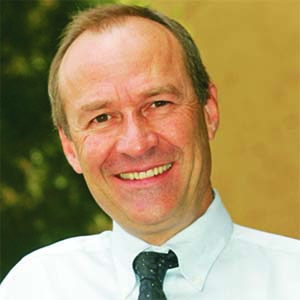Formula One is the recognised pinnacle of motorsport. The cars are the fastest, most challenging and complex racing machines on the planet. They are driven – piloted – by an elite group of racers who have managed, in one way or another, to climb the ladder of success to the very top step. How do they get there?
 By Graham Duxbury
By Graham Duxbury
Five-time world champion Juan Manual Fangio earned his place in the Alfa Romeo F1 team of the early 1950s by dominating the rough post-WWII city-to-city road races in his native Argentina driving modified saloon cars. His skill was recognised by the country’s president, Juan Peron, who sponsored his move to Europe and F1.
John Surtees cut his teeth in the dangerous world of motorcycle racing. Having won seven world titles, he tried his hand at cars. After only a couple of starts in F2 cars he moved to F1 with Lotus and entered the British Grand Prix, finishing second in his first world championship event. Four years later he claimed the title for Ferrari.
It was Michael Schumacher who showed the world the value of karting (go-karts) as a precursor to F1. He began his competition career at the tender age of three and, not being from a wealthy family, managed to translate successes on the kart tracks (he was a German and European champion) into sponsored drives into bigger machinery. He reached F1 via a fairly tortuous route involving Formula Ford, Formula Koenig (a low-cost German single seater championship), F3, Formula 3000 and sports cars.
Much like Schumacher, today’s main F1 championship protagonists – Ferrari’s Sebastian Vettel and Mercedes-Benz’ Lewis Hamilton – both began their karting careers at an early age.
Vettel started at three-and-a half and by the age of 11, having shown exceptional talent, was accepted into the Red Bull Junior karting team. At 16 he was promoted to single seater cars under the Red Bull banner and in 2004 – as a 17-year-old schoolboy – won the German Formula BMW championship with 18 victories from 20 races.
Based on this impressive performance, he quickly progressed to the F3 Euro Series at the same time debuting as a F1 test driver for Sauber. While competing in the Renault 3.5 series, which he was leading in 2007, he was called up to race full-time for BMW Sauber.
Joining Red Bull’s Toro Rosso team for 2008, Vettel became the youngest driver to win a F1 GP at the time when he triumphed in the Italian GP. It remains the only win for Toro Rosso and was a catalyst for his move to the senior Red Bull team with whom he swept four world championship titles in 2010, 2011, 2012 and 2013, confirming his status as one of the all-time greats.
Lewis Hamilton’s racing career began at the ripe old age of six, when his father bought him his first kart as a Christmas present. He quickly rose through the amateur ranks, winning more than a dozen class and series karting championships.
As a 10-year-old multiple champion he approached then McLaren F1 team boss Ron Dennis for an autograph, and told him: “Hi. I’m Lewis Hamilton. I’ve won the British Championship and one day I want to be racing your cars.” Dennis wrote in his autograph book, “Phone me in nine years, we’ll sort something out then.”
It was the beginning of a close relationship with Dennis who helped steer the young driver’s career, enrolling him into the McLaren driver development programme. His contract included an option of a future F1 seat, which would eventually make Hamilton the youngest-ever driver to secure a contract which later resulted in an F1 drive.
He progressed quickly up the ranks through Formula Renault UK and British F3. In 2005 he won the European F3 championship moving to GP2 a year later and winning this F1 feeder series’ championship at his first attempt. Progression to F1 was a foregone conclusion and in 2007 he was paired with Fernando Alonso in the McLaren F1 team.
He tied with Fernando for second place in the title chase that year, their fierce battle effectively handing the championship to Ferrari’s Kimi Raikkonen. However, Lewis rebounded, winning the title the following year. In 2014 he joined the Mercedes-Benz team and won back-to-back titles in 2014/15. As a three-time F1 champion he is on the brink of eclipsing the race winning tally of Ayrton Senna – Lewis’ early idol – to further cement his place among F1’s most successful drivers.
